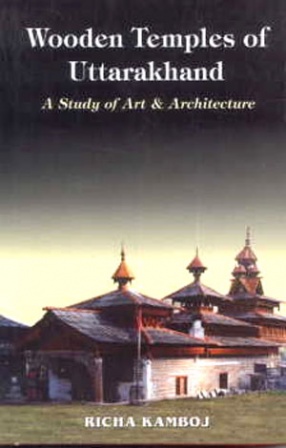The wooden temples are not merely the centers of religious importance for the native people, they are also intrinsically woven into the socio-cultural fabric of their life. Over the ages they have served as the edifices of their faith, myths and folk-life and have developed into rich repertories of the original indigenous art and architecture. They still preserve in them the typical style and skill of the Pahari architecture.
Wood, abundantly available in the Himalayan region, played a key role in the evolution of the style of Pahari architecture of the region.
This book is the result of extensive survey and research of the wooden temples of Uttarakhand undertaken for the first time. The book covers various types of wooden temples such as the Canopied Composite roofed temples, multi tiered Pyramidal temples, tower-type temples, gable roofed temples, and Nagar type temples with wooden components added to their structure.
There was hardly any information available about the possible sites of wooden temples in this region when this study was undertaken. The wooden temples, a great valuable treasure of the indigenous art and architecture of the natives in its original form, are invariably situated in the villages, most of them lying in the remote areas having rugged terrain and deep ravines, and thus remained lost to the outside world in the past.
The present book is a humble attempt to make the study as comprehensive and analytical as possible to bring out the wealth of indigenous art and architecture of this part of the Himalaya which has virtually remained in a state of almost complete neglect so far.







There are no reviews yet.